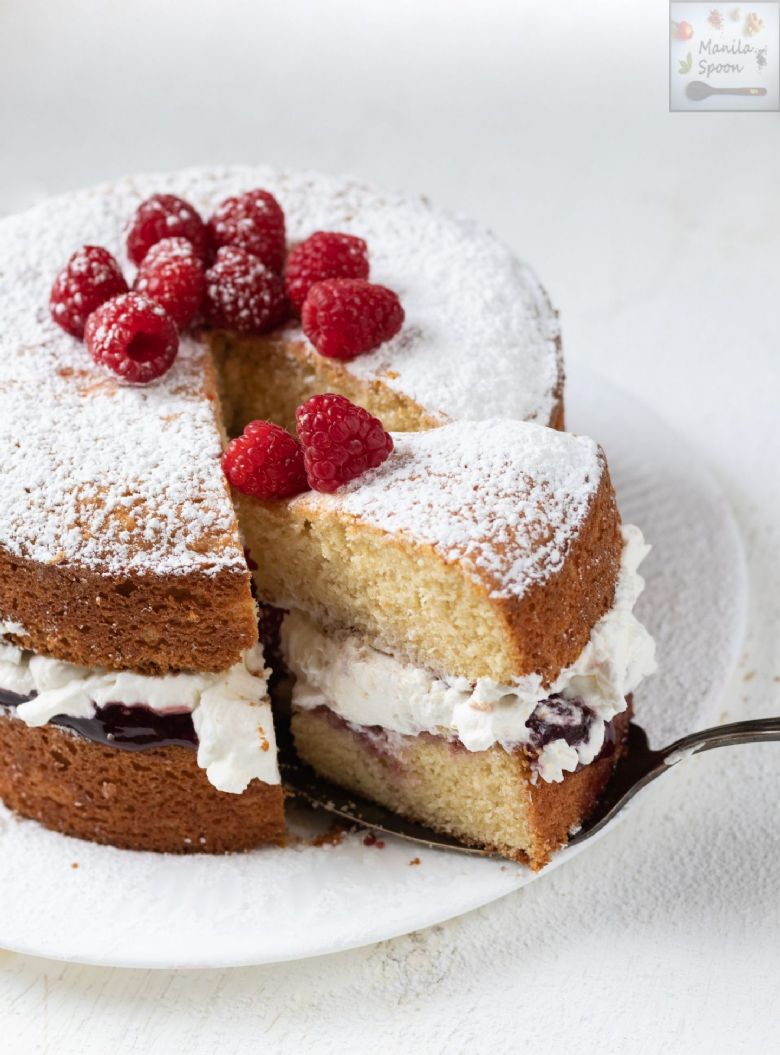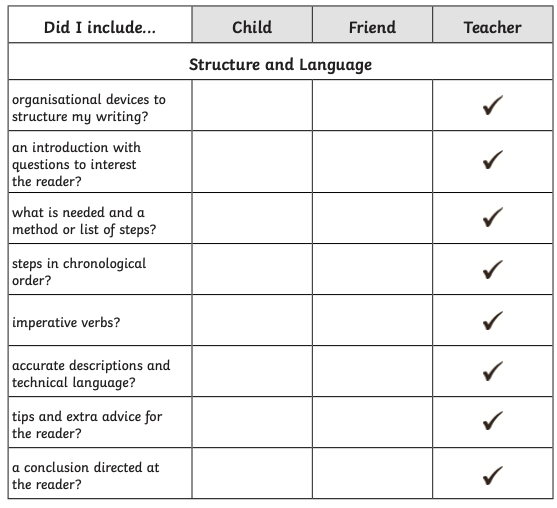Wednesday 10th June
English L.O: To write an instructional text.Activity 1: Listen to Chapter 16 of 'The Stolen Sister' on the Learning --> Stories page of the website
Activity 2: Today you are going to write an instructional text on how to make a Victoria sponge cake. An instructional text is a text that explains to someone how to do something, such as bake a cake, play a game or work a DVD player for example. The first thing I would like you to do is open the file below titled 'Instructional Text Example'. Have a really good look at this instructional text example to remind yourself of what a set of instructions look like and what you MUST include in your own. The features are colour coded in and around the text. Activity 3: The first step of writing a set of instructions is to answer the following 4 questions:
Open the file below titled 'Instructions Planning' and spend 10-15 minutes conducting your own research into answering these 4 questions. Activity 4: When your planning is complete and you are confident of what an instructional text looks like and what features it should include, start writing out your text in your home learning books. Make sure you are including all the features appropriate to an upper key stage 2 Instructional Text as seen below: The features from the checklist below that must feature:
Does it Work?If you have the ingredients and equipment to do so, have a go at following your own instructions at home to make your very own Victoria sponge cake. Consider the following questions if you do:
|
MathsYear 5 L.O.: To multiply mixed fractions by integersActivity 1: Watch the demonstration video below for today's lesson.
For more guidance and video clips on this topic, click th following link: BBC Bite size Activity 2: Open up the file below titled 'Y5 Maths Fluency' and complete all questions on this page. Use the answers attached below (Y5 Maths Fluency Answers) to mark your work when you have answered all the questions carefully. Activity 3: For a challenge, open up the file below titled 'Y5 Platinum Challenge' and complete either the Bronze, Silver OR Gold page. There is a page of questions for each level. Use the answers attached (Y5 Platinum Challenge Answers) to mark your work when you have answered all the questions carefully.
Year 6 L.O: To calculate FDP equivalents.Activity 1: Watch the demonstration video below for today's lesson.
Activity 1: Open the file titled 'Y6 FDP Table'. Fill in this table with the fraction, decimal and percentage equivalents. The answers are also attached for you to check once you are done. Helpful Hints!
Activity 3: For a challenge, open up the file below titled 'Y6 Platinum Challenge' and complete either the Bronze, Silver OR Gold page. There is a page of questions for each level. Use the answers attached (Y6 Platinum Challenge Answers) to mark your work when you have answered all the questions carefully.
|
P.S.H.E. L.O: To determine how 'The Universal Declaration of Human Rights' links to the idea of justice and freedom.Activity 1: Have a go at answering the following two questions in your home learning books:
In 1948, The United Nations (48 different countries) came together and created what we now know as 'The Universal Declaration of Human Rights' This document is a historic document which outlined the rights and freedoms of every human being.It was the first international agreement on the basic principles of human rights. It laid the foundation for the human rights protections that we have in the UK today. Activity 2: Watch this video carefully. It outlines the many rights all human beings have. Listen carefully to see if any of the rights you wrote down for question 2 are mentioned in this short clip.
Activity 3: What is the difference between justice and freedom? Have a go at answering this question for yourself or discussing it with a family member or peer before reading the information below.
Activity 4: Attached below are TWO files. One is titled 'Human Rights Articles 1-30'. This document shows you all 30 human rights all human beings are entitled to under the 'The Universal Declaration of Human Rights'. The other file is called 'Human Rights Sort'. Open up both of these files. Read through each article carefully (they are only a sentence or two for each maximum) and decide whether you think each right is related to the idea of 'justice', 'freedom', both or neither. DO NOT WRITE THE WHOLE ARTICLE OUT, JUST WRITE THE ARTICLE NUMBER IN EACH BOX. The answers are on page 2 to mark once you are done. |
P.E.At a time where we all find ourselves indoors for the most of the day, we should bear in mind how important daily exercise is for our health and wellbeing, particularly our mental health. If you are able to, take your device somewhere with plenty of space (even the garden on a nice sunny day) or clear some space in front of your computer and follow along with Joe Wicks for a 30 minute workout. I will definitely be doing the same! OR alternatively, Mrs Lightfoot has uploaded some very exciting links to other online PE sessions which you can access by following this link: Alternative P.E. Ideas
|


